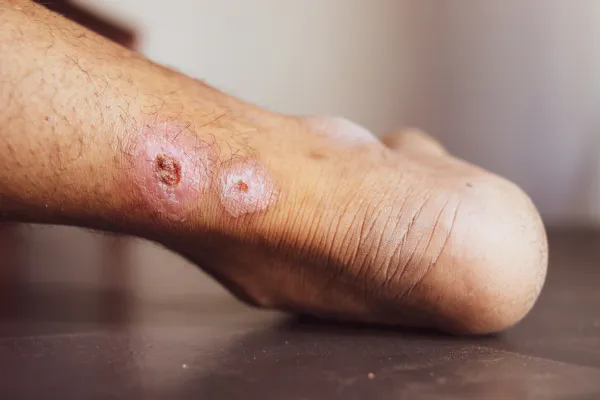
Leg Ulcers vs. Foot Ulcers: What’s the Difference?
Not All Ulcers Are the Same — Here’s Why That Matters
If you’ve noticed a sore on your lower leg or foot that just won’t heal, you might be wondering:
“Is this a leg ulcer or a foot ulcer?” And does it even matter?
The short answer is — yes, it matters a lot.
Even though they can look similar on the surface, leg ulcers and foot ulcers often have very different causes, risks, and treatment needs. Understanding the difference can help you take the right steps toward healing and avoid serious complications.
Let’s break it down.
What Is an Ulcer, Exactly?
An ulcer is an open sore or wound that takes a long time to heal — or doesn’t heal at all. Ulcers happen when the skin breaks down and deeper tissue becomes exposed. They’re usually caused by poor circulation, nerve damage, pressure, or a combination of these.
Ulcers are more common in people with diabetes, vein disease, or limited mobility.
Foot Ulcers: What to Know
Foot ulcers are open sores that develop on the bottom of the foot, the toes, or around the heel.
Causes:
Diabetic neuropathy (nerve damage that prevents you from feeling pain)
Poor circulation (often from diabetes or PAD)
Pressure and friction from walking, tight shoes, or foot deformities
Injury you didn’t notice or treat
What They Look Like:
A crater-like sore or open wound
Often surrounded by callused or dry skin
May be painless (especially if you have nerve damage)
Can become infected quickly if untreated
Risks:
Infection that spreads to the bone
Tissue death (gangrene)
In severe cases, amputation
Leg Ulcers: What to Know
Leg ulcers usually appear on the lower leg, especially around the shin or ankle area.
Causes:
Venous insufficiency (poor blood flow in the veins)
Varicose veins
Swelling in the legs that doesn’t go down
Sometimes caused by arterial disease or inflammation
What They Look Like:
A shallow, slow-healing sore
Skin around the ulcer may look brownish, reddish, or shiny
May ooze fluid or feel itchy
Often surrounded by swollen, irritated skin
Risks:
Ongoing discomfort and swelling
Repeated infections
Risk of ulcers coming back if circulation issues aren’t treated
Why Podiatrists Treat Both
You might think podiatrists only treat the foot—but at American Surgeons Group, we also treat wounds on the lower leg, especially when they’re connected to foot or circulation problems.
Our team looks at the whole picture—blood flow, nerve function, skin health, pressure points, and more. Whether it’s a foot ulcer from diabetes or a venous leg ulcer from circulation issues, we’re trained to manage it from start to finish.
How We Help You Heal
When you come in with a sore on your leg or foot, here’s what we might do:
Examine the ulcer carefully to identify the type and depth
Check blood flow and nerve function
Debride (clean out) the wound safely
Apply advanced dressings that promote healing
Relieve pressure with orthotics, boots, or pads
Coordinate care if a vascular specialist or other provider is needed
Create a plan to protect the area and prevent new ulcers
Home Care and Prevention Tips
Even after an ulcer starts healing, it’s important to protect your skin and circulation:
Check your feet and legs daily for new spots or color changes
Moisturize dry skin, but don’t overdo it between toes
Avoid walking barefoot
Wear compression socks (if recommended)
Manage blood sugar levels and stay active to improve circulation
Keep legs elevated if swelling is a problem
When to Seek Help
Here’s the bottom line: Don’t ignore a sore that isn’t healing.
If you see redness, swelling, drainage, or the wound gets worse—or if you have diabetes—get it checked out as soon as possible.
We’re Here to Help
At American Surgeons Group, we’ve helped hundreds of people just like you get the care they need to heal foot and leg ulcers—and prevent them from coming back.
If you’re worried about a sore or wound that just won’t go away, you don’t have to figure it out alone.
👉 Book an appointment today— and let’s take the first step toward healing together.
